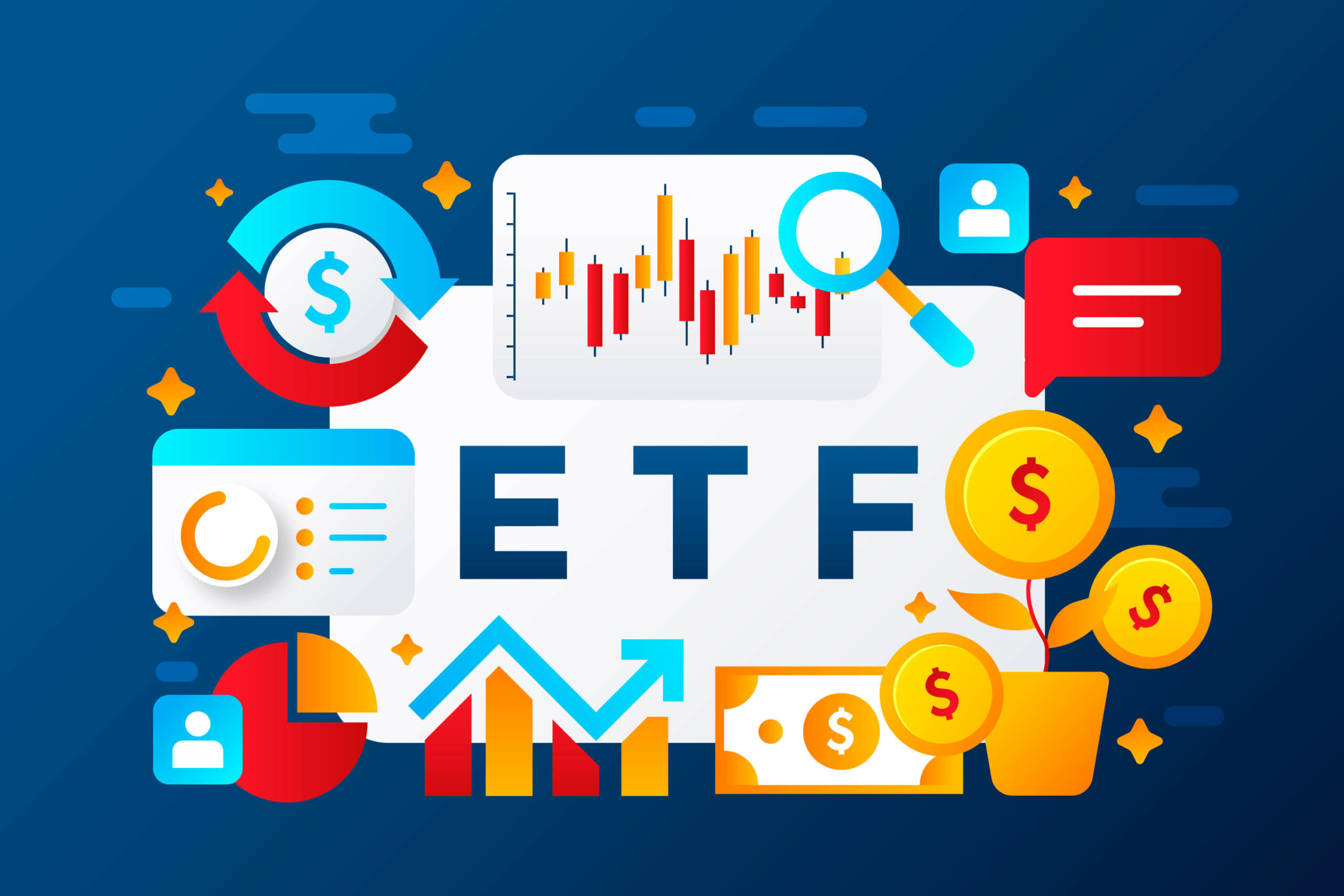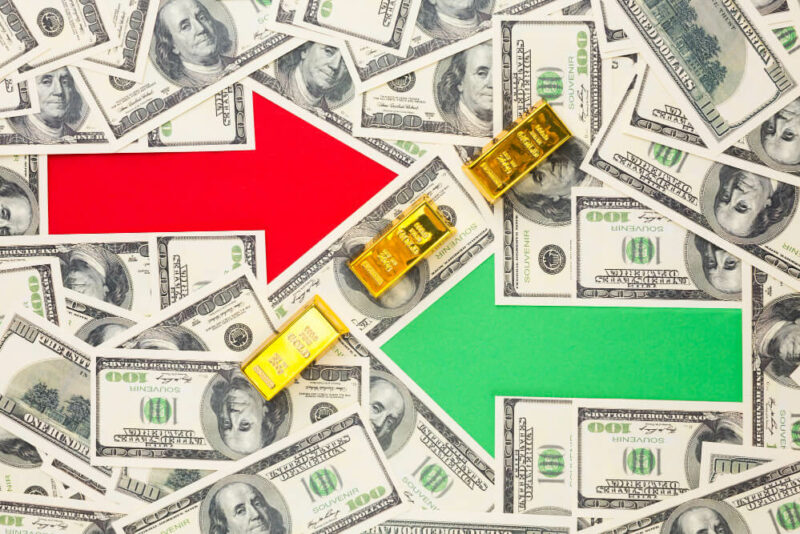Distribution refers to the allocation of assets, while dividend is a payment to shareholders from a company’s profits.
When it comes to investing, understanding the difference between distribution and dividend is crucial. These terms often arise in discussions about returns and income from investments. So, let’s dive in and clarify the distinction between the two.
Dividends are amounts paid out to shareholders by individual companies. They are a portion of the company’s after-tax profits that are distributed among its investors. Dividends are typically paid to shareholders of a specific company based on the number of shares they hold.
On the other hand, distributions are income payments received by investors who are invested in exchange-traded funds (ETFs). ETFs include a basket of various assets such as stocks, bonds, and cash. The income generated by these assets is collectively distributed among the investors who hold shares in the ETF.
Key Takeaways:
- Dividends are paid out by individual companies, while distributions come from ETFs.
- Dividends are a portion of a company’s after-tax profits distributed to shareholders, while distributions represent income generated by a portfolio of assets held by an ETF.
- Dividends are paid based on the number of shares held in a specific company, while distributions are received by investors who hold shares in an ETF.
- Understanding the difference between distribution and dividend is essential for making informed investment decisions.
- Investors should consider their investment goals and preferences when choosing between individual shares or ETFs.
How Dividends Work

Dividends are a key aspect of investing that allow shareholders to reap the benefits of a company’s success. Let’s take a closer look at how dividends work and the factors that influence them.
When a company generates profits and pays taxes on those profits, it has a decision to make regarding what to do with the remaining funds. One option is to distribute a portion of the profits to shareholders as dividend payments. This allows investors to share in the company’s success and receive a return on their investment.
The dividend payout ratio is an important metric to consider when examining a company’s dividend policy. It represents the percentage of a company’s after-tax profits that are distributed as dividends. For example, a company with a high dividend payout ratio of 70% to 80% is distributing a significant portion of its earnings to shareholders.
In Australia, dividends often come with franking credits. These credits represent the tax already paid by the company on the profit from which the dividend is being paid. Franking credits can provide additional benefits to shareholders, as they can be used to offset tax obligations or even result in a tax refund.
To better illustrate the concept of how dividends work, let’s consider an example:
| Company | Profits | Dividend Payout Ratio | Dividend with Franking Credits |
|---|---|---|---|
| ABC Corp | $1,000,000 | 75% | $750,000 with franking credits |
| XYZ Corp | $2,000,000 | 80% | $1,600,000 with franking credits |
In the above example, ABC Corp has generated $1,000,000 in profits and decides to distribute 75% of those profits as dividends to shareholders. The dividend payout for ABC Corp would amount to $750,000, and this amount would include franking credits.
Similarly, XYZ Corp has generated $2,000,000 in profits and decides to distribute 80% of those profits as dividends. The dividend payout for XYZ Corp would amount to $1,600,000, which would also include franking credits.
Overall, understanding how dividends work is essential for investors looking to make informed decisions about their investments. By considering dividend payout ratios and the presence of franking credits, investors can assess the potential returns and tax implications of dividend-paying stocks.
How Distributions Work

Distributions play a crucial role in understanding how ETFs (Exchange-Traded Funds) work and how investors receive income from them. ETFs are investment funds that comprise a diversified portfolio of assets, including stocks, bonds, and cash. Through this diverse mix, ETFs generate income in various forms, contributing to the overall distribution to investors.
The income generated within an ETF comes from several sources:
- Dividends from Stocks: When companies within the ETF’s portfolio distribute profits to their shareholders, these dividends become part of the overall income distribution.
- Interest from Bonds and Cash: ETFs may invest in fixed-income securities such as bonds and maintain cash reserves. The interest earned from these assets is also distributed to investors.
- Capital Gains or Losses: If an ETF buys and sells securities within its portfolio, any resulting capital gains or losses are included in the distribution calculation.
- Foreign Income: ETFs that invest in international securities may also receive income from companies or entities operating outside the home country.
To ensure fairness and transparency, ETFs collect all the income generated through these sources and distribute it back to investors based on the number of shares they hold. The distribution is usually paid out on a periodic basis, such as quarterly or annually.
By investing in ETFs, individuals gain exposure to a diversified pool of assets and benefit from the income generated by these investments. This approach offers convenience and allows investors to access a wide range of income streams without investing directly in individual stocks or bonds. The income generated through distributions can serve as a valuable source of regular income or be reinvested for future growth.
It’s important to note that the specific distribution process can vary between different ETFs. Therefore, investors should carefully review each ETF’s prospectus and consult with a financial advisor to understand the distribution mechanics and income potential of a particular fund.
Dividend Yield vs Distribution Yield
When evaluating investments, it is important to understand the difference between dividend yield and distribution yield. Dividend yield is a measure of the income return on individual stocks, while distribution yield is used to assess the income return on ETFs. Let’s take a closer look at each yield calculation.
Calculating Dividend Yield
Dividend yield is calculated by dividing the annual dividend per share by the company’s share price and expressing it as a percentage. It can be calculated using the following formula:
| Annual Dividend Per Share | Share Price | Dividend Yield |
|---|---|---|
| $2.50 | $50.00 | 5% |
The dividend yield provides insight into the income potential of owning individual stocks and is often used by investors seeking regular dividend income.
Calculating Distribution Yield
Distribution yield, on the other hand, is calculated by dividing the total distributions received over the past 12 months by the ETF’s price and expressing it as a percentage. The formula to calculate distribution yield is as follows:
| Total Distributions (Past 12 Months) | ETF Price | Distribution Yield |
|---|---|---|
| $5.00 | $100.00 | 5% |
The distribution yield provides investors with an assessment of the income potential of ETFs, which hold a diversified portfolio of securities.
It is worth noting that both dividend yield and distribution yield can be calculated with or without including franking credits. Franking credits represent the tax already paid by the company on the profit distributed as dividends. Including or excluding franking credits can affect the yield calculation.
Understanding the difference between dividend yield and distribution yield allows investors to make informed decisions based on their investment preferences and goals. While dividend yield is commonly used to assess the income return on individual stocks, distribution yield is used to assess the income return on ETFs.
Tax on Dividends and Distributions
Both dividends and distributions contribute to an investor’s taxable income. In Australia, dividends from domestic companies often include franking credits, representing taxes already paid by the company. These credits can help reduce the investor’s overall tax burden. Meanwhile, distributions from ETFs include various types of income like dividends, interest, and capital gains. ETFs issue tax statements summarizing these components to simplify tax reporting for investors.
Tax obligations can differ based on personal circumstances and country-specific rules. To ensure accurate tax reporting and get personalized guidance, it’s wise to consult with an accountant or tax professional.
| Tax on Dividends | Tax on Distributions | |
|---|---|---|
| Eligibility | Dividends may come from Australian tax-paying companies and may have franking credits | Distributions are income from ETFs with various components (dividends, interest, capital gains, foreign income) |
| Tax Reporting | Franking credits can be used to reduce an investor’s tax burden | ETFs issue tax statements summarizing the components of distributions |
| Personalized Guidance | Consult an accountant or qualified tax professional for personalized tax advice | Consult an accountant or qualified tax professional for personalized tax advice |
Dividends and Distributions in Investment Strategy
Dividends and distributions are crucial components of an effective investment strategy, especially for investors seeking regular income in a low-interest-rate environment. Dividend-paying companies distribute profits to shareholders as dividends, providing a steady income stream.
Exchange-traded funds (ETFs) offer another avenue for investors to access diversified portfolios. ETFs collect income from various sources, including dividends and interest, distributing it to investors. This enables investors to benefit from income generated by multiple companies without managing individual stocks. When incorporating dividends and distributions into an investment strategy, it’s important to consider factors like growth potential and risk tolerance to tailor the portfolio to specific goals and objectives.
To provide further context, here’s an example of a table comparing the characteristics of dividend-paying companies and ETFs:
| Dividend-Paying Companies | ETFs |
|---|---|
| Regular dividend payments | Periodic distributions |
| Potential for higher dividend yields | Distribution yield determined by underlying portfolio |
| Investors can directly choose specific companies | Offers diversification across multiple companies |
| Opportunity to benefit from individual stock performance | Income generated from various sources |
| Dividend income is typically taxable | Tax handling varies depending on the type of distribution |
Ultimately, incorporating dividends and distributions into an investment strategy allows investors to create a balanced and tailored portfolio that aligns with their financial objectives. By combining regular income from dividend-paying companies and the convenience of ETF distributions, investors can take advantage of the benefits offered by both approaches.
Understanding Dividends
A dividend is when a company shares its earnings with shareholders who own its stock. It’s like a thank-you from the company to its investors for supporting its business. Dividends can be given as cash payments or as more stock in the company.
Shareholders usually agree on dividends during the company’s yearly meeting or through a board decision. They’re often given out regularly, like every three months, so investors get a steady income. One way to see if dividends are good is by looking at the dividend yield, which tells investors how much income they might get from their investment compared to the stock price. Overall, dividends are like a reward for investors and can be an important part of their investment plans.
Important Dividend Dates
Understanding the timeline of dividend dates is crucial for investors to determine their eligibility for dividend payments. Dividends follow a specific sequence of events, with each date playing a significant role in the distribution process.
Announcement Date
The announcement date is when company management publicly declares the dividend payment. It serves as the official notification to shareholders about the upcoming distribution.
Ex-Dividend Date
The ex-dividend date is a pivotal date for dividend eligibility. Shareholders who own the stock one business day before the ex-date are entitled to receive the dividend payment. It is important to note that the stock price typically decreases by the amount of the dividend on the ex-dividend date.
Record Date
The record date, also known as the ownership date, is the date when a company reviews its records to determine which shareholders are eligible for the dividend payment. Investors who own the stock on the record date will receive the dividend, regardless of whether they still hold the stock on the payment date.
Payment Date
The payment date is when the dividend is disbursed to eligible shareholders. It is the date on which investors receive the actual cash or stock dividend in their brokerage accounts. The payment date is typically a few weeks after the record date.
By keeping track of these important dividend dates, investors can plan their investment strategies and ensure they meet the necessary requirements to receive dividend payments. Now, let’s take a look at an illustrative example below to better understand how dividend dates work:
| Date | Action |
|---|---|
| Announcement Date | March 1, 2022 |
| Ex-Dividend Date | March 15, 2022 |
| Record Date | March 17, 2022 |
| Payment Date | April 1, 2022 |
Investors who held the stock on March 15, 2022 (ex-dividend date) and were recorded as shareholders on March 17, 2022 (record date) would qualify for the dividend payment. The dividend would be disbursed to eligible shareholders on April 1, 2022 (payment date).
Why Do Companies Pay Dividends?
Companies pay dividends to reward shareholders for investing in them and to build trust. These payments show that a company is making money and wants to share it with its investors. Dividends indicate financial stability and a company’s commitment to its shareholders, attracting new investors and keeping current ones happy.
Dividend payments give insight into a company’s financial health and performance. When companies pay dividends regularly, it means they’re making enough money to keep doing so. However, not all companies pay dividends, as some prefer to reinvest profits for future growth. Investors should consider a company’s dividend policy along with other factors like financial performance and growth potential to make smart investment choices.
Key Takeaways:
- Companies pay dividends to reward shareholders and maintain trust.
- Dividend payments can indicate stable cash flow, profitability, and a shareholder-friendly approach.
- Companies may retain earnings for future growth or invest in strategic opportunities instead of paying dividends.
- Reductions or eliminations of dividend payments may signal financial troubles or strategic re-investment.
- Investors should consider a company’s dividend policy alongside other factors when assessing its potential as an investment.
Conclusion
It is important for investors to understand the difference between distribution and dividend. Dividends are received from individual shares, representing a portion of a company’s after-tax profits returned to shareholders. On the other hand, distributions come from ETFs and represent a share of the income from a portfolio of financial assets. These concepts play a crucial role in investment strategies, with dividends being attractive for those seeking regular income and distributions providing diversification and convenience.
By grasping the variances between distribution and dividend, investors can make informed decisions based on their goals and preferences. Dividends and distributions are valuable tools for assessing a company or ETF’s performance, stability, and potential returns. It is recommended to carefully consider a company’s dividend policy, dividend yield, and potential tax implications before making investment decisions. Consulting with a financial advisor can help individuals navigate the complexities and determine the best path forward.
FAQ
What is the difference between distribution and dividend?
Dividends are received from individual shares, while distributions come from ETFs. Dividends represent a portion of a company’s after-tax profits returned to shareholders, while distributions represent a share of the income from an ETF’s portfolio of financial assets.
How do dividends work?
Dividends are a portion of a company’s after-tax profits that are distributed to shareholders. Dividends can be paid out as cash or reinvested in additional stock. Dividends must be approved by the shareholders and are often distributed quarterly.
How do distributions work?
Distributions are a share of the income that an investor receives from an ETF. ETFs collect income from various sources such as dividends, interest, capital gains, and foreign income, and distribute it back to investors.
What is the difference between dividend yield and distribution yield?
Dividend yield is the dividend per share expressed as a percentage of a company’s share price, while distribution yield is the past 12 months total distributions as a percentage of the ETF price. Both calculations can be done with or without including franking credits.
What is the tax on dividends and distributions?
Both dividends and distributions are part of an investor’s assessable income from a tax perspective. Dividends from Australian tax-paying companies may come with franking credits, which can be used to reduce an investor’s tax burden. ETFs issue tax statements that summarize the components of their distributions.
How do dividends and distributions factor into investment strategies?
Dividend-paying companies offer regular income to investors, especially in a low-interest-rate environment. ETFs that distribute income from various companies provide diversification and convenience. Dividends and distributions can be considered alongside other factors such as growth potential and risk tolerance when selecting investments.
What is a dividend?
A dividend is the distribution of a company’s earnings to its shareholders. Dividends can be paid out as cash or in the form of reinvestment in additional stock. Dividends must be approved by the shareholders and are often distributed quarterly.
What are the important dividend dates?
Dividends follow a chronological order of events. The announcement date is when dividends are announced by company management, followed by the ex-dividend date, the record date, and the payment date. The ex-dividend date is crucial, as shareholders who own the stock one business day prior to the ex-date qualify for the distribution.
Why do companies pay dividends?
Companies pay dividends to reward shareholders for their investment and to maintain trust. Dividend payments can indicate a company’s stable cash flow, profitability, and shareholder-friendly approach. However, companies may choose to retain earnings for future growth or investment opportunities instead of paying dividends.
What is the summary of distribution vs dividend?
Distribution and dividend are distinct concepts in the realm of investments. Dividends are received from individual shares, while distributions come from ETFs. Dividends represent a portion of a company’s after-tax profits returned to shareholders, while distributions represent a share of the income from an ETF’s portfolio of financial assets.
Source Links
- https://www.investsmart.com.au/investment-news/whats-the-difference-between-dividends-and-distributions/152895
- https://blog.stockspot.com.au/dividend-vs-distribution/
- https://www.investopedia.com/terms/d/dividend.asp
Image Credits
Featured Image By – Freepik
Image 1 By – rawpixel.com on Freepik
Image 2 By – Freepik








